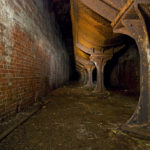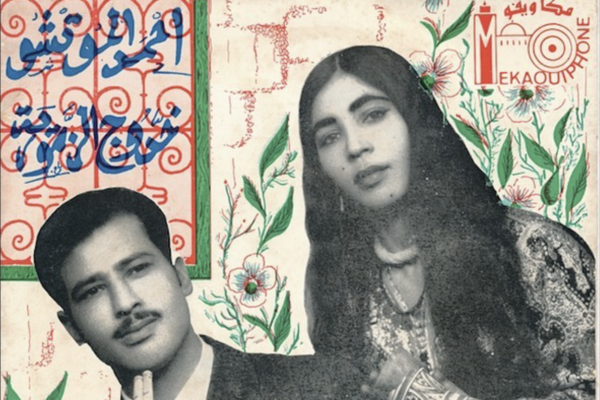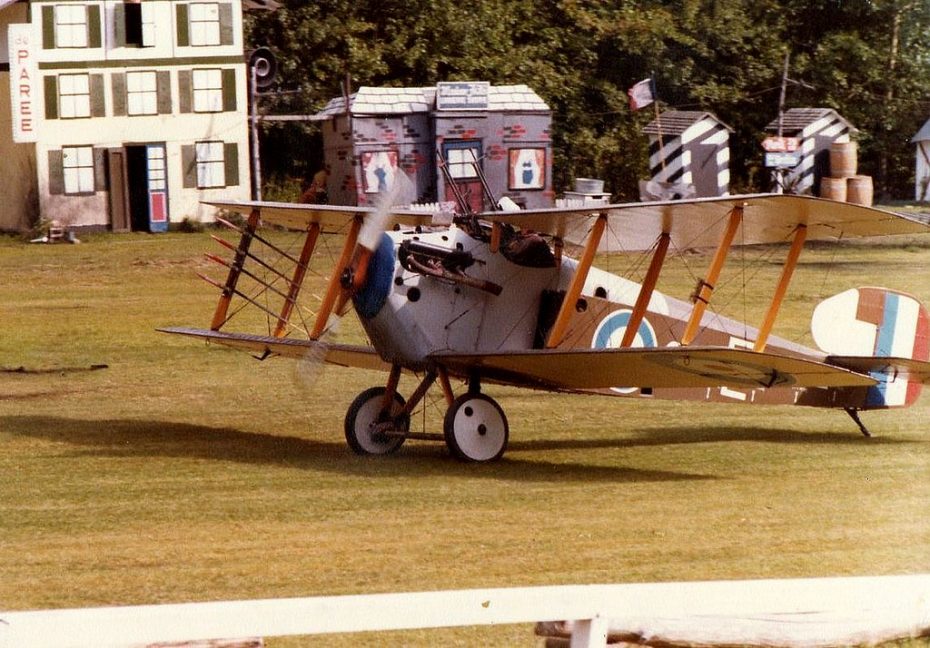
Wander through the quaint, old fashioned town of Rhinebeck in New York’s Hudson Valley, and you may feel as though you’ve stepped back to another era. Especially when you look up into the sky: for its quite common to see vintage airplanes circling high above all day long, the distinctive sound of old, single propeller aircraft adding to the atmosphere that not much has changed in the sleepy town below for a hundred years.
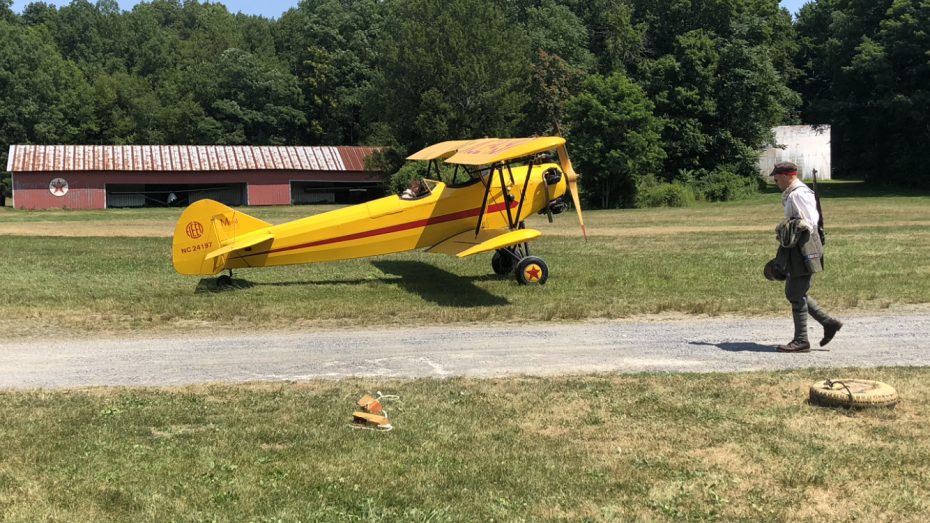
That there’s so many vintage airplanes flying through the skies over Rhinebeck should come as no surprise. Just outside the historic town, is one of the world’s greatest collections of airplanes from the early part of the 20th century. Incredibly, most of them still fly. We went to explore a true, living museum, and discovered that if the Golden Age of aviation is alive and well, it is at the Old Rhinebeck Aerodrome.
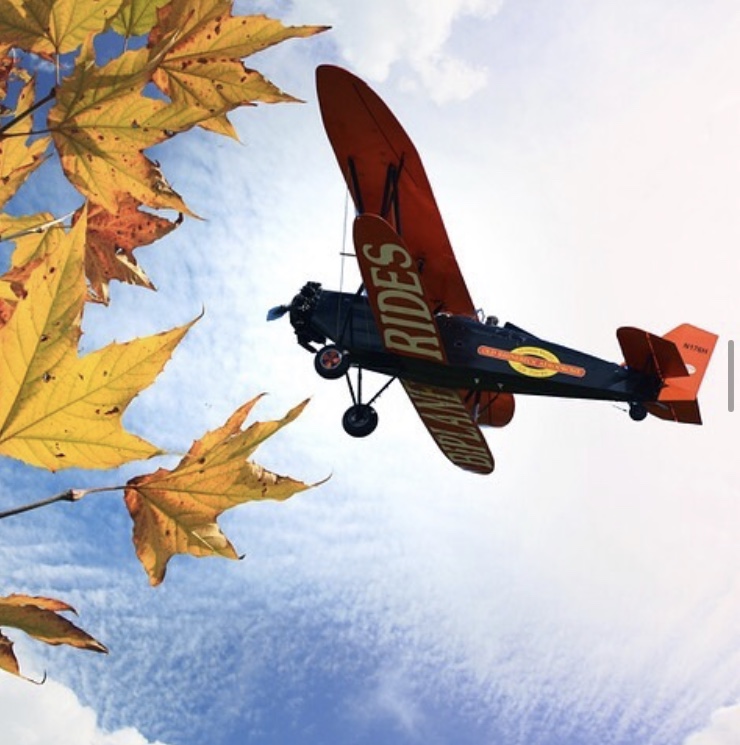
Rhinebeck can be found several hours north of Manhattan, along the Hudson River. A quiet, picturesque town where it is still possible to stay at one of the oldest hotels in America, the Beekman Arms, that has provided food and lodging to weary travellers since 1766, and in whose taproom, Alexander Hamilton and Aaron Burr began the quarrel that would lead to their infamous duel.
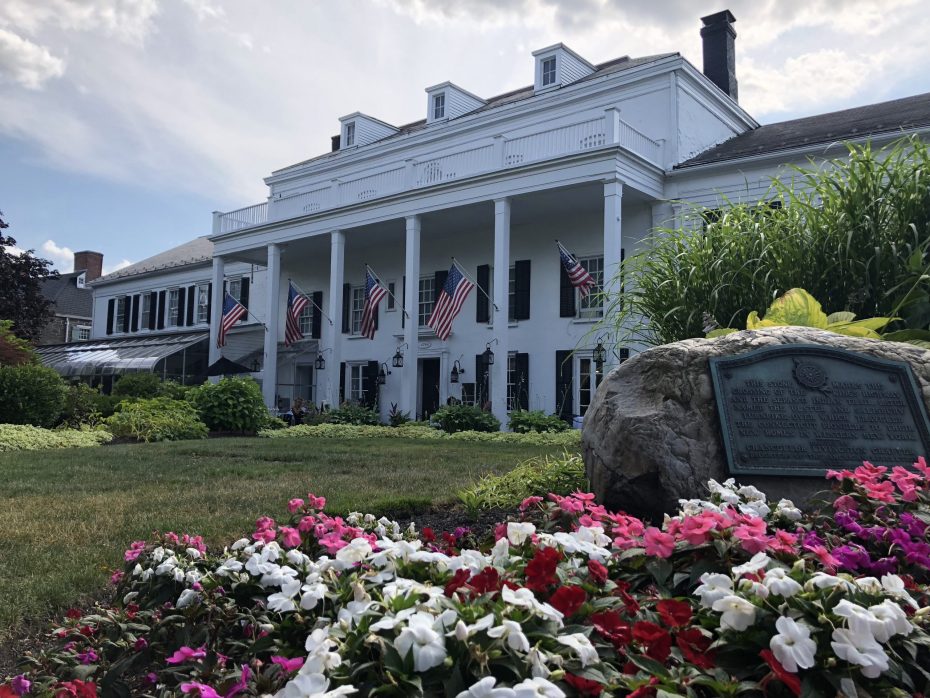
But leave the town, and follow a winding road through the countryside for several miles, and you’ll find yourself at an old aerodrome, an enchanting place that reminds you of how magical air travel used to be.
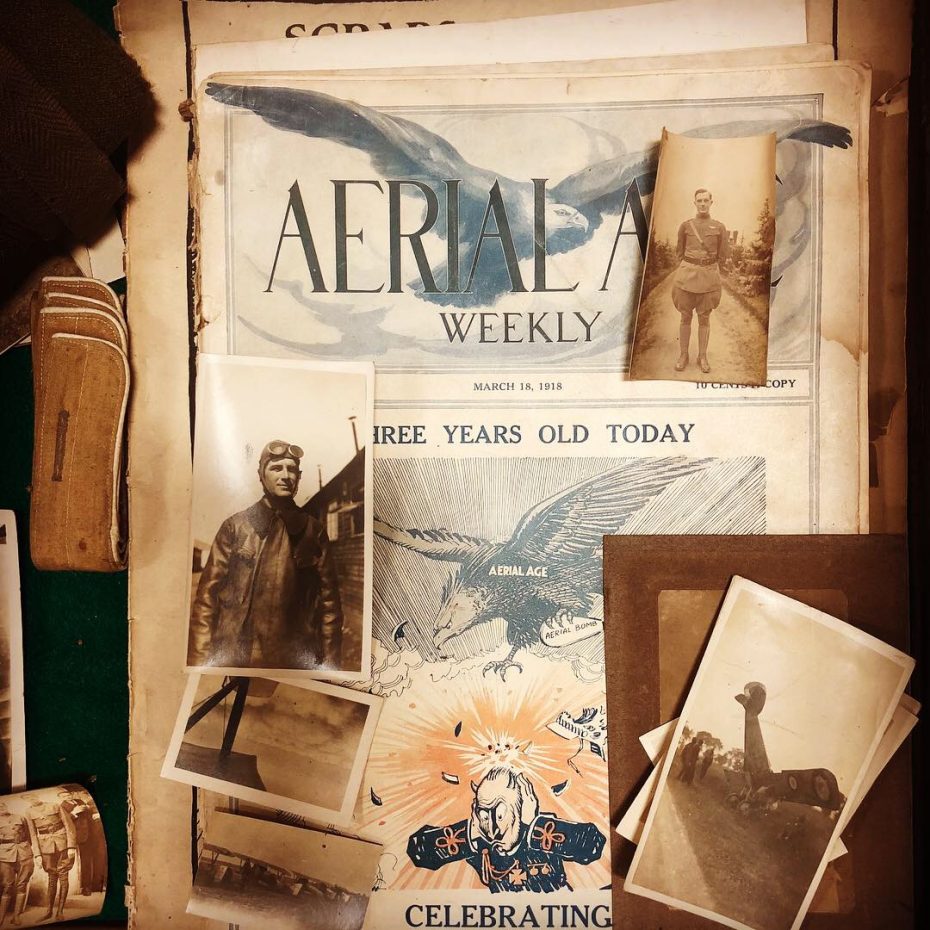
“We want people to come and experience the myth and magic of early aviation,” explains Michael Fisher, Secretary on the Board for the Rhinebeck Aerodrome Museum. “Today, you drive to an airport that looks like a shopping centre, walk though a tube into an airplane that would be hard to distinguish from a bus or train, and arrive at another tube at another shopping centre. It seems any reference of flight is hidden.”
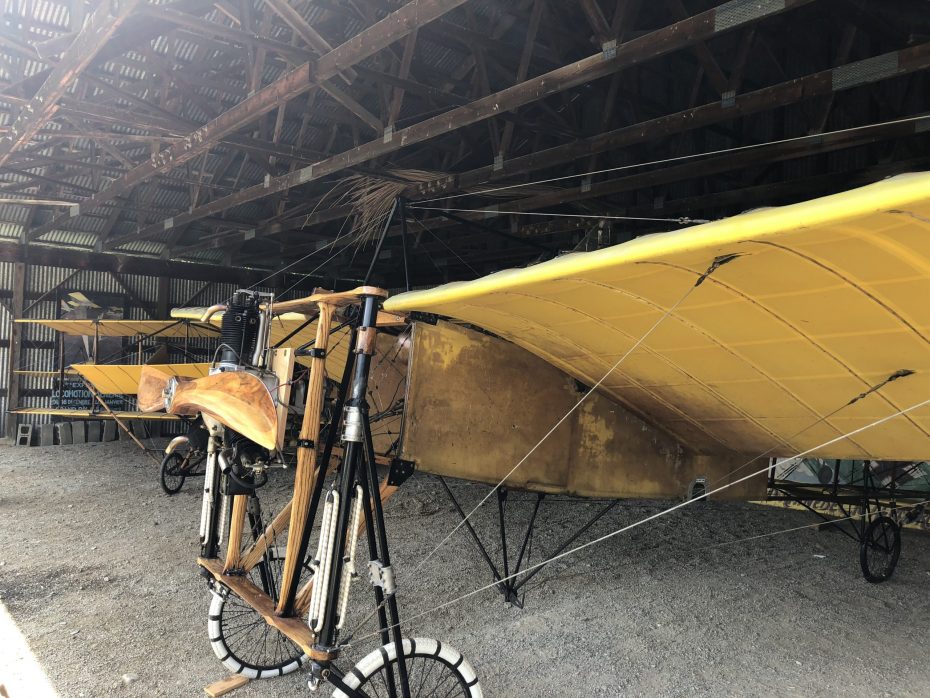
Old Rhinebeck Aerodrome couldn’t be more different; the planes are stored in corrugated iron Nissan huts that you just walk up to; the planes taxi from a hilltop at one end of a sloping field to gain extra speed, before racing downhill and taking off on runways made from freshly cut grass. “We are unique. There are other fine operations, but no one does exactly what we do,” explains Fisher.
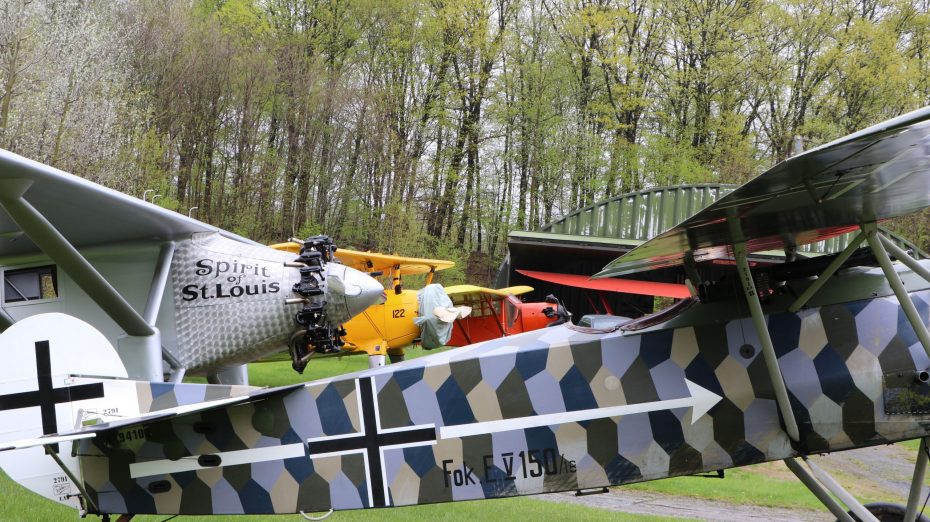
Currently, the museum is a Flying Circus of about sixty airplanes, thirty vehicles, including a World War One era tank, and untold memorabilia. All the planes date from the earliest ‘Pioneer’ era of flight, through the Great War and into the feats of exploration that made up the Golden Age of Aviation in the 1920s and 30s. “There are originals, copies with original engines, and copies with more modern engines,” explains Fisher. “We attempt to make the copies as authentic as possible.”
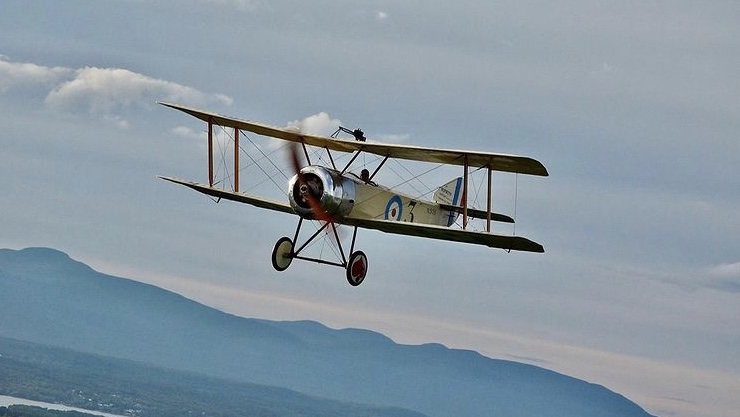
What makes Old Rhinebeck Aerodrome special is that many of these planes aren’t just on display, but actually take to the air; the museum is one of the last places where you can still see old fashioned ‘barnstorming’ air displays that used to be popular in the 1920s. “I read about an old Flying Circus routine,” tells Fisher, “in which the pilots lined up and, at a starting signal, removed their boots and trousers, flew a circuit, landed, and the first one to get dressed won. The ‘Pants Race’ is now part of our Saturday show.”
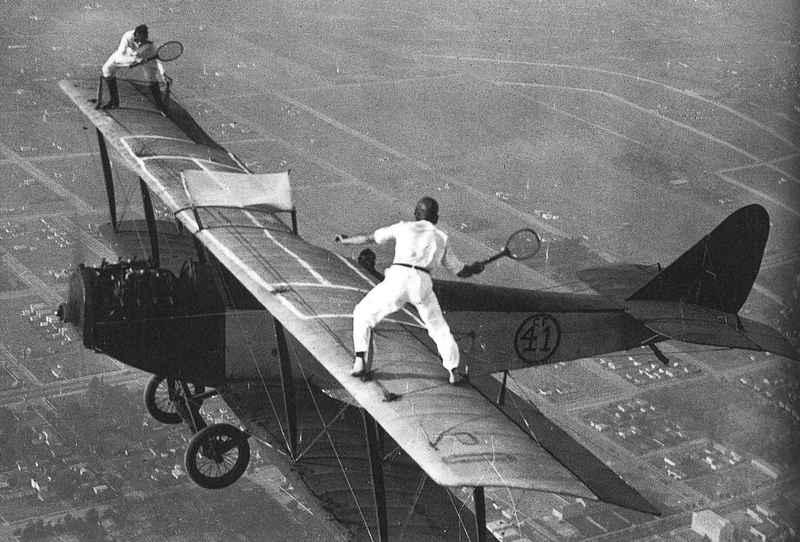
The Aerodrome faithfully recreates the captivating era of the first air pioneers, following in the footsteps of aviators and personalities like Wiley Post, ‘Wrong Way’ Corrigan, Roscoe Turner who flew with a lion cub as a co-pilot, and Charles Lindberg. Fisher explains, “We believe our Spirit of St. Louis is the most accurate ever built. It lacks only the many gas tanks….We don’t want to be tempted!”
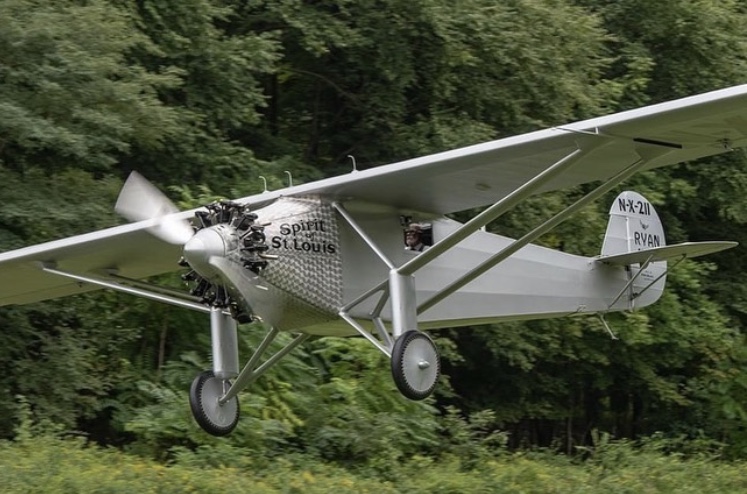
Visitors to an airshow at the Old Rhinebeck Aerodrome also experience the air battles that took place over the Western Front in World War One. This was the era of the ‘knights of the air,’ when flying aces fought in duels that were as brutal as they were gallant, where gentlemen fliers would often pose for photographs with their opponents if they were downed and captured. The more adventurous visitor can find out just what it was like to fly in the Great War, as you can actually take to the skies in a century old biplane.
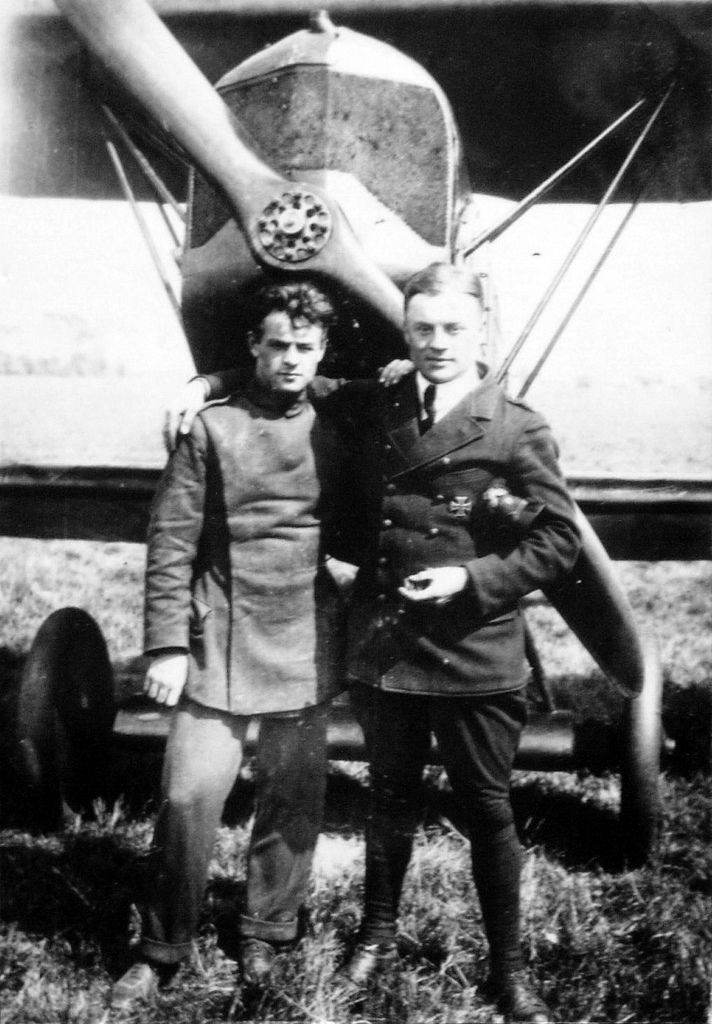
The World War One airshows charmingly channel the spirit of the adventure serials of the 1920s and 30s; they feature a dastardly German baron duelling with an English pilot, tussling over a damsel in distress. The airshows may have a whimsical quality, but the aircraft, and the skill it takes to fly and maintain them are very much real, and can be attributed to the work and vision of one man.
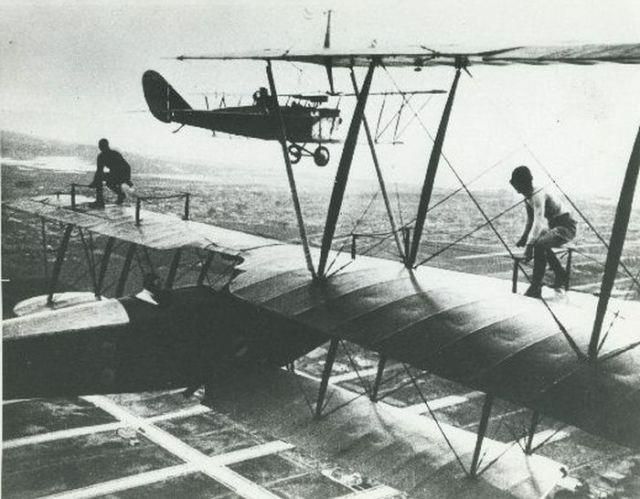
Cole Palen grew up on a farm in the Hudson Valley, just next door to an airport in Poughkeepsie that has long since vanished. From the fields, he would watch planes fly low over the Hudson Valley. “He was an airplane nut,” explains Michael DiGiacomio, President of the Rhinebeck Aerodrome Museum. Fisher tells a story of how one day, a starting crank fell from the skies from one of the planes: “It fell into the chicken yard, and when he returned it, he got a ride in an 1929 New Standard D-25,” starting a life long passion for vintage planes. “He eventually bought six original World War One aircraft” at an auction explains DiGiacomio, “they became the nucleus of his collection.”
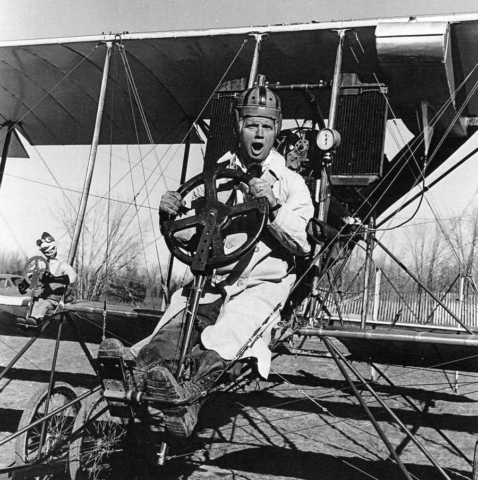
Palen tirelessly restored and tinkered with the planes until he had gathered enough capital to buy his own farm in the Hudson Valley. “Three fields became a runway,” explains Fisher, “a hangar was built in and 1958 his Fleet 16-B was the first aircraft to land there. We still fly the Fleet every weekend.”
Word soon spread about the old planes from the Great War taking off from a farm in the Hudson Valley, and Palen took to leaving an old top hat to collect donations from those who came to watch. The flying demonstrations would become airshows and in turn, the living museum. Cole Palen believed, “It isn’t an airplane if it doesn’t fly.”
“Cole Palen was the most unusual, singular individual I ever met,” explains Fisher. “Nothing deterred him. If he had a bad season, he would sell an airplane. He survived hangar collapses, his house burning down, multiple crashes, and always emerged with high spirits and good humour. His booming laugh still echoes off the trees surrounding the Aerodrome.”
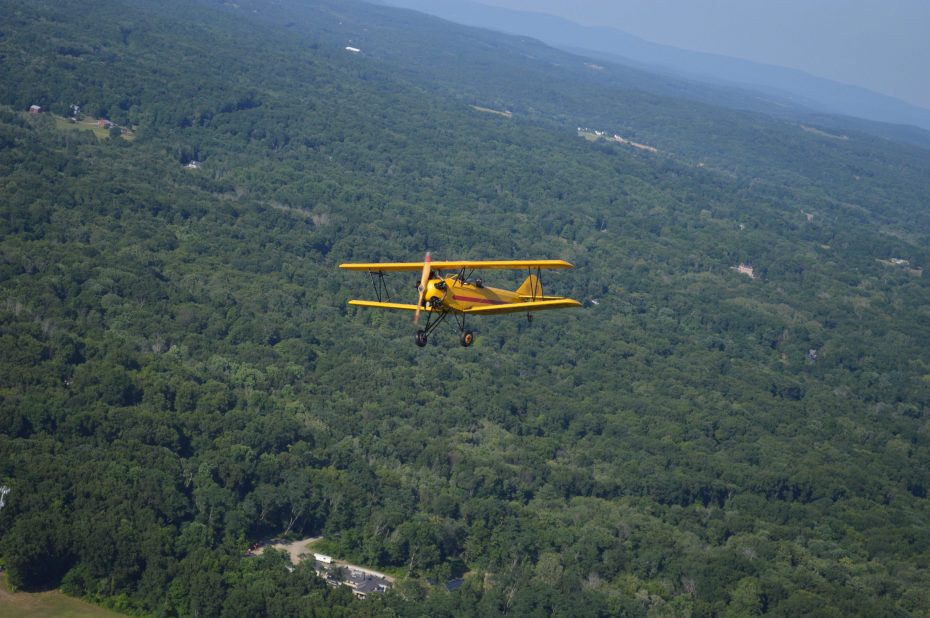
Palen’s enthusiasm still lives on at the museum, which is kept going by the tireless work of volunteers. Speak to them, and their love of vintage airplanes is plain to see, a passion often started by Palen himself. “I started as a boy building model airplanes,” explains DiGiacomio. “Our model aviation club would have their monthly meetings at Old Rhinebeck Aerodrome. Later after college I began volunteering cutting the grass, eventually helping put on their airshows.”
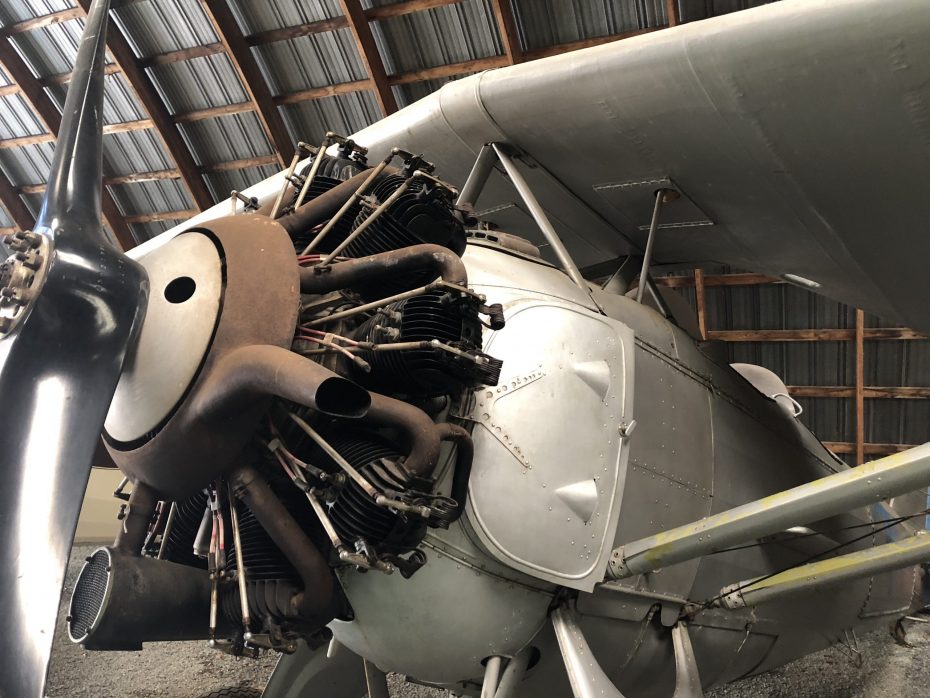
Former Ground Crew Chief Patrick Walker had a similar experience. “I first learned about the Old Rhinebeck Aerodrome from the book ‘The Skies Over Rhinebeck’ written by Richard King, one of the first pilots and aircraft builders to join the Aerodrome’s founder Cole Palen in his venture,” explains Walker, who now chairs the Collection Committee, assisting with aircraft restoration and up keeping the museum’s collection. “I read his book cover to cover as a child and ate up the stories of flying adventures and excitement from the early days. Cole and Richard and all the pilots at the Aerodrome were my childhood heroes and I would build models of their aircraft to fly in my back yard. As soon as I was able to drive I began volunteering at the Aerodrome and became more and more involved over the past ten years.”
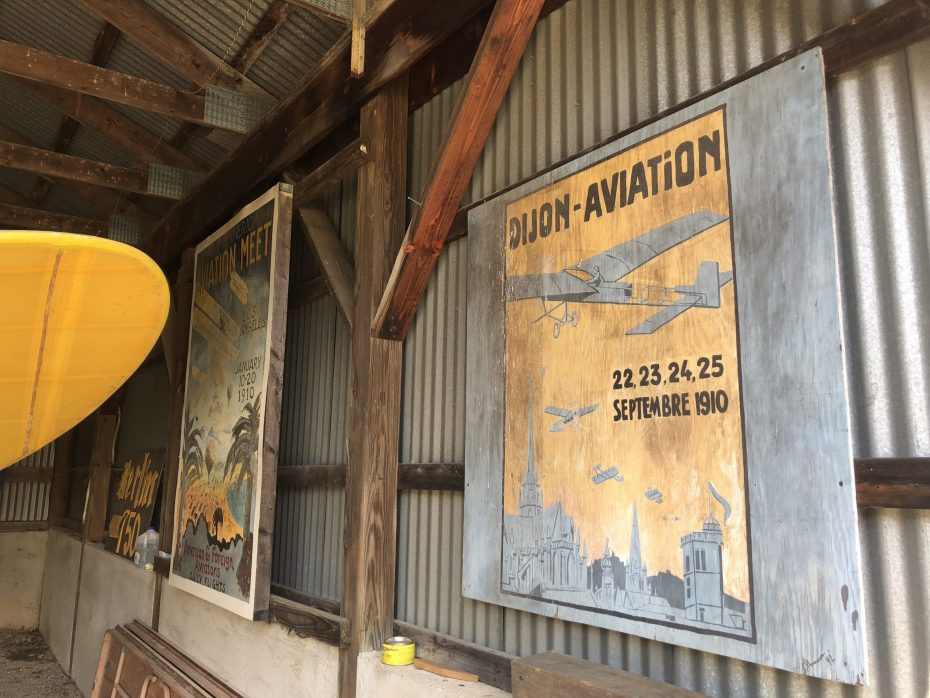
Michelle Locke first volunteered at the Aerodrome when she was fourteen. “I lived about five minutes down the road. I’d have to say the airplanes are what I love most about this place. They all have such rich histories and stories and it brings me joy to be able to share that with others. I had my first airplane ride when I was fourteen in the Aerodrome’s D-25 New Standard biplane, and it was the most incredible feeling I had ever experienced. I spent the next few years getting airplane rides here and there, but decided that I would love it more if I could be at the controls myself.”
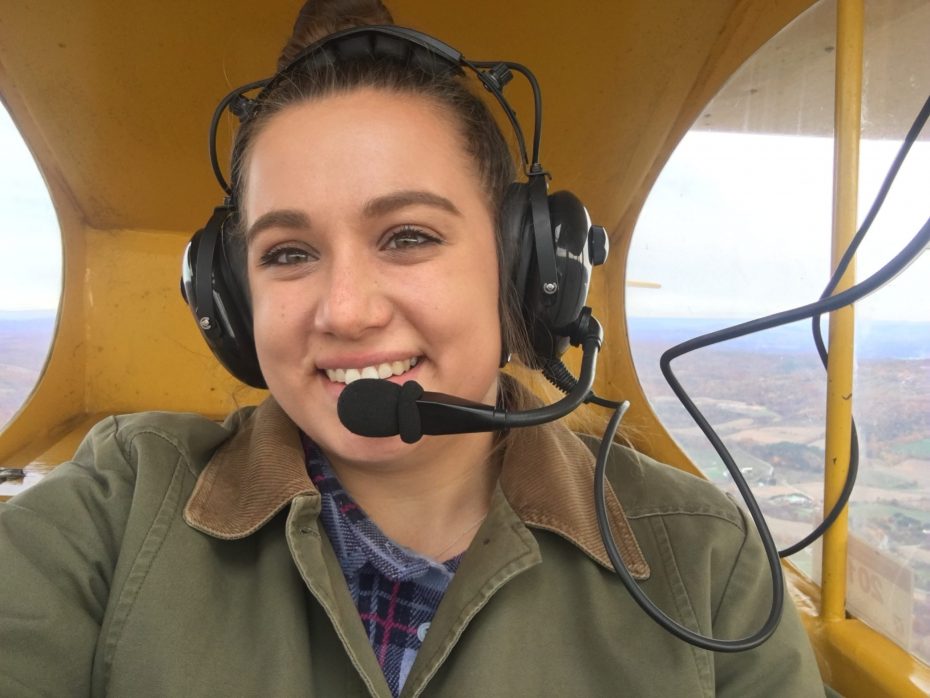
Following in the rich tradition of female aviators from the Golden Age, Locke recently acquired her pilot’s license.”Vintage planes are more simple in a lot of ways, but more complicated in others,” Locked explains. “The plane I fly, a Piper J-3 Cub, has only six instruments so there’s a lot less to look at but that means you have to be constantly monitoring the sound of the airplane and the way it’s flying. A modern airplane has more instruments that assist in monitoring everything and will notify you of an abnormality. Also, vintage airplanes are lighter and slower so they are more susceptible to wind both in the air and on the ground.”
Locke is involved all over the airfield: “During the weekdays I work with our Director of Aircraft Maintenance, helping him work on the airplanes and getting them ready to fly in the shows. I am also our social media coordinator and a member of our Communications Committee. I mainly control our Instagram, Twitter, and YouTube accounts. During the weekends, I am part of the senior grounds crew. So during the airshow I wing run and prop the airplanes. I also play the heroine of our Sunday airshow, Trudy Truelove.”
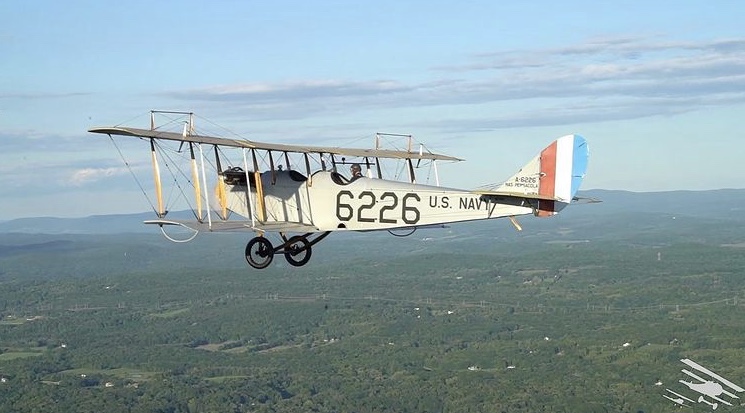
One of the largest challenges facing Old Rhinebeck Aerodrome is maintaining the planes themselves. When you see the hundred year old planes up close, they seem so flimsy and slow compared to modern aircraft, that its incredible to see them even take to the skies. “We have two dedicated mechanics and dozens of volunteers,” explains DiGiacomio. “They all put in a huge effort to keep the aircraft and vehicles operational.”
“Every year there are fewer people who possess the knowledge to work on these old airplanes,” explains Walker. “We are fortunate enough to have some of them at the Aerodrome. I spend as much time as I can working with them and watching and learning from them so that I can carry on the skills into the future. Besides the knowledge there is the issue of finding parts which are becoming more rare.”
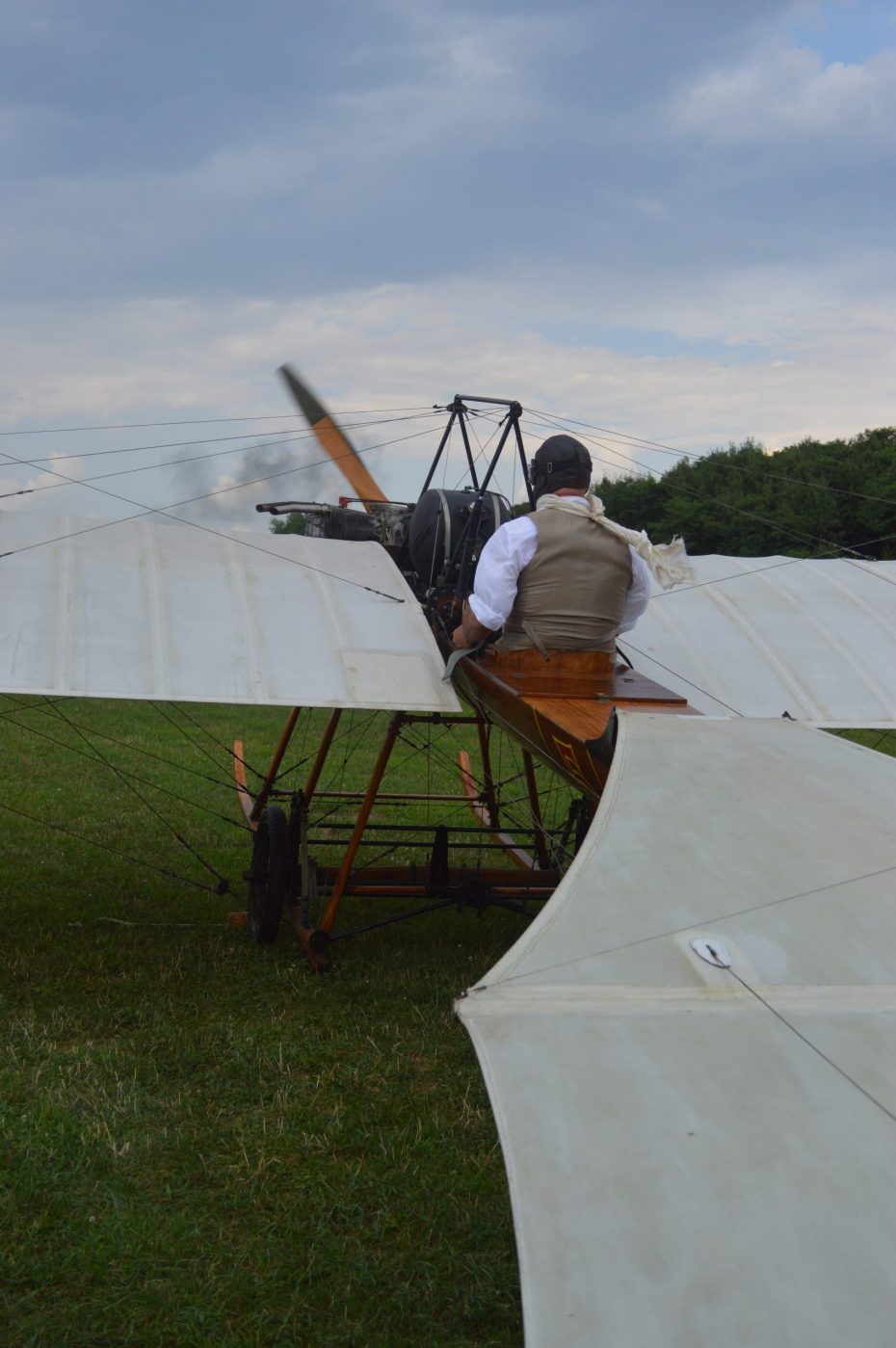
Visit Old Rhinebeck Aerodrome and you’ll find yourself transported back to a time when airfields were still actual fields, when planes flew with wooden propellors, and flying was the most thrilling and romantic to way to travel.
Old Rhinebeck Aerodrome’s museum is open May 1st, when biplane rides begin again. The airshows begin June 19th. If you have a passion for aviation, the Aerodrome is always looking for new people to join their Volunteer Corps! More details about the Aerodrome can be found at oldrhinebeck.org



